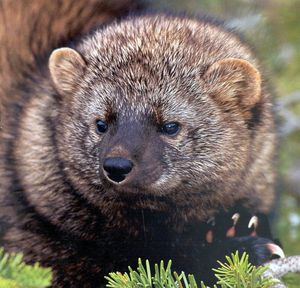Fishers specially equipped for Washington reintroduction
WILDLIFE -- The fisher, a mid-size member of the weasel family that's being reintroduced to the South Cacades, has a cool reproductive capability that tunes into its habitat.
Despite their name, the mostly nocturnal fishers don’t eat fish. But if their preferred food sources -- snowshoe hare, birds and rodents including porcupines -- are in short supply, they can adjust their birth rates.
Tara Chestnut, ecologist for Mount Rainier National Park, was one of the wildlife specialists offering insight during last week's release of fishers trapped in Canada and relocated to the Gifford Pinch National Forest.
“The females have this amazing super power to be almost pregnant – they breed in the spring and then they hang on to the fertilized eggs,” she told the reporters assembled for the release. “The following spring, if conditions are favorable, they’ll allow it to implant.”
This ability to delay reproduction also provides a boost to the reintroduction effort because those future offspring likely have different fathers than the males brought to area, giving the small new population more genetic diversity, Chestnut said.
It wasn’t clear during the pre-release exams if any of the four females were pregnant, but Chestnut said she’s optimistic. “Our fingers are crossed,” she said.
Each female can have from one to four kits, which she’ll raise for the summer until they spread out to spend their lives on solitary hunting missions.
Other insights from the release:
- Fishers tend to stay at a slightly lower elevation than wolverines, their larger weasel-family cousins.
- Biologists will keep track of the animals with small radio transmitters that were surgically inserted into their bellies before release.
- The fishers were caught by trappers around Williams Lake, northeast of Vancouver, B.C. While listed as endangered in Washington, the population in Canada is robust enough that a percentage can be trapped each year. Washington is paying trappers $600 for each live fisher in good condition – considerably more than their pelts are worth.
- The goal is to set about 40 loose in Washington before February so the females have enough time to make themselves at home and find dens before it’s hoped they give birth in March or April.

